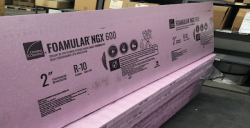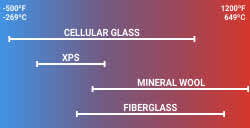
- Moisture
- Commercial
- Blog
Opinions and opportunities in building for resilience
A summary of results from the recent Owens Corning and AIA survey
Climate change is continuing to shape our world, and that includes how we build to accommodate new and sometimes extreme weather conditions. Owens Corning and the American Institute of Architects (AIA) recently completed a survey to gather more data on industry trends and opinions around making the built environment more resilient. In this blog, we’ll summarize three of the report’s key findings, which indicate areas of opportunity for stakeholders across the industry. Be sure to check out the full report here.
1. Going beyond “built to code”
“Built to code” means different things to architects, contractors and building owners. Architects generally believe that codes are insufficient for achieving resilient buildings. However, contractors and building owners typically view codes as adequate. Helping contractors and owners consider the hazards a building may face in its lifetime can support efforts to elevate resiliency beyond codes.
Key takeaways:
- Architects view codes as a means to achieve compliance, not a best practice to drive resiliency.
- Contractors and owners tend to view codes as adequate.
- Increasing awareness among contractors and owners about the hazards that may threaten a building’s performance can open up a conversation about resiliency and inform choices in the design stage that will support more resilient buildings.
- Providing a business case for resilience can help elevate the conversation above code.

2. Building for resilience and longevity
While the upfront costs of a construction project matter to architects, contractors and owners, the long-term performance of a building is especially important to owners. Looking at commercial construction through a long-term lens can help architects and contractors achieve resilient buildings that perform over the long run.
Key takeaways:
- Many architects think clients are primarily focused on upfront costs.
- Longevity and a building’s performance over time are especially important to building owners.
- Specifying materials that will contribute to longevity can bring a “total cost of ownership” consideration to the conversation.
- Especially at a time when extreme weather events are becoming more frequent, hazard risks cannot be overlooked. A conversation about the hazard threats a building may be exposed to can inform choices that support resiliency.

3. Hazard planning: Concerns for architects, contractors and clients
What represents a hazard when it comes to commercial buildings? Compared to architects and contractors, owners consider hazards differently. Considering how building materials are selected in context with owners’ emergency planning efforts could streamline the path toward more resilient commercial buildings.
Key takeaways:
- When considering hazard risks, material durability and moisture resistance are shared concerns for architects and clients. Architects are likely to also consider weather resistance, energy efficiency, acoustics and fire performance.
- Contractors’ top hazard concerns include natural disasters, environmental degradation, temperature increase and subsidence.
- Framing the building material conversation around hazard planning concerns and the role building materials can play in mitigating these risks may help architects, contractors and clients achieve hazard plans aligned with their emergency planning efforts.

The findings of this study indicate there are many areas where architects, contractors and owners have shared concerns related to resiliency. Opening up conversations around hazards and long-term performance can spotlight opportunities to improve building resilience from initial design to material specification.
© 2022 Owens Corning. All Rights Reserved.
Related Articles
Related Articles
Jump to a Solution Suite
Jump to a Solution Suite







